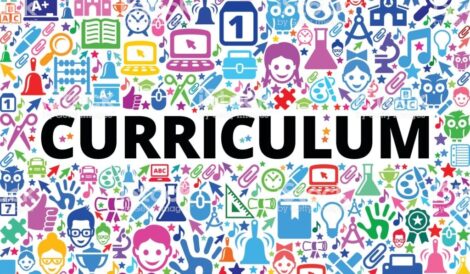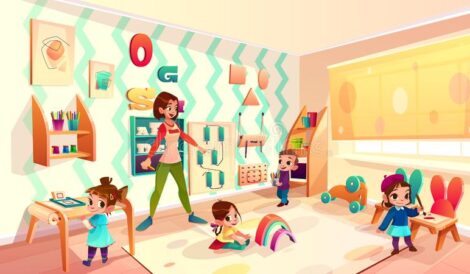During my first year of teaching, I was overwhelmed with a classroom of 32 energetic fifth graders with a wide array of assets and needs. Little did I know when I accepted this position that it had been previously filled by a teacher who decided to move to a newer and wealthier school district at the last minute.
This meant that the class roster I was handed the Friday before school began had been “specially selected” for Mr. Gonzalez. My future colleagues had placed several students with few successful school experiences on his class roster, not foreseeing they would be in a first-year teacher’s classroom.
After a difficult start to the school year, the school principal, who was also new to the school and had hired me at the last minute, set up a meeting with me in which she asked for the names of students I was having the most difficulty teaching. She suggested that I write down their names.
I quickly jotted down a list and she looked it over. I’ll never forget what she did next: She turned the list back toward me and said, “Learn as much as you can about who these students are and you’ll learn how to teach them.”
What I wish I had known then is now one of the most well-known research findings: Student-teacher relationships are a powerful predictor of student academic, personal and social success in school—at all ages.
While there are many teaching strategies for building these relationships, some of the most basic focus on how teachers can build relationships through daily instruction and interactions that are authentic and confident.
TEACHING STRATEGY NO. 1: BE AUTHENTIC
Authentic teaching builds relationships through instructional conversations and activities that invite students into teachers’ worlds and take teachers into students’ worlds.
Every lesson is an opportunity to build authentic connections between students and teachers. When I reflect on this aspect of teaching, I wonder how much my students actually knew about me. I remember reading the books they were reading, learning about superheroes in the most popular movies or cartoons, and asking about their experiences outside of school. But to what extent was relationship-building really one of my instructional goals?
“Being real” requires planning lessons that engage students in connecting with each other and with their teachers. Rather than beginning lessons with “Today we’re going to learn about …,” teachers can build relational understanding by sharing experiences that are tied to the topic and asking students to do the same. They also can describe their personal interests, their expectations for success, and why they value learning.
Such teaching strategies form a critical foundation for launching every discussion, learning activity or project. During a lesson, teachers can show authenticity by learning alongside students, sharing their intellectual skepticism and asking questions like, “What does that mean to you?” or “Have you ever seen/heard this before?” Then, at the end of the lesson, teachers can always take time to discuss with students what they learned about the topic, each other and themselves—and how these new understandings are important.
“Being real” means sharing vulnerabilities and the challenges of learning and teaching. Teachers must show they are always learning, which means making mistakes, asking for help, and having to back up or even start over.
Teachers laugh with students and share their emotions in productive ways. Authentic learning should evoke personal experiences and, in the classroom, involve interacting with and learning from others.
Every teacher can “be real”—but it will not happen without strategic effort and practice. For example, listen to high school teacher John Gunderson as he explains his approach to “being real” in a Teaching Tolerance professional development video concerning classroom climate.
TEACHING STRATEGY NO. 2: BE CONFIDENT
During my first year of teaching and beyond, I wish I also had realized how important my own confidence was for my students’ confidence. Although I felt confident in my knowledge of the content, I did not always clearly and consistently express that I knew I could help my students learn and believed they all could succeed.
Teaching efficacy is a teacher’s belief in the ability to help students be successful.
Imagine going into a doctor’s office and discussing a medical procedure, but the doctor saying, “I’m not sure how successful I will be at this procedure.” Your confidence in pursuing that procedure will be influenced and you might even doubt how successful the procedure really was once it is over.
Teaching efficacy works the same way. Teachers who believe they can help every student learn tend to have students who believe they can—and they do. Students with high-efficacy teachers achieve at higher levels, show more motivation when learning and experience more positive emotions about learning.
Teaching efficacy can be demonstrated in a number of ways that also are relationship-building. Being a high-efficacy teacher doesn’t mean always being right and not making mistakes. Rather, high-efficacy teachers assure students they won’t give up: “I can help you, but we may need some other people for support.”
I vividly remember observing in a sixth-grade classroom and watching a teacher struggle to model a mathematics procedure when a student called out, “I thought you knew this.” Mrs. Robinson chuckled and replied, “I do, but I’m confused and I need to work this out because I want all of you to learn it the right way.”
Mrs. Robinson was being authentic and showing high efficacy. And she was being relational through her high-quality instruction that modeled strategic persistence. She also was clearly expressing her positive expectations for student success. Building relationships means expecting success for all students—believing everyone has assets that can be leveraged while knowing that working together is the only way to figure out how to do leverage them.
Teachers’ expectations for their students influence student-teacher relationships. In the research of Robert Pianta and his colleagues at the University of Virginia, student-teacher relationships have been linked to student success and well-being.
For example, Pianta and his colleagues have found that teachers who talked negatively about young children interacted with them negatively. These classroom interactions were associated with unproductive student-teacher relationships that young children replicated with subsequent teachers. Teachers expressed their lack of confidence in helping some students, and their relationships with these students suffered, limiting the child’s opportunities to realize the benefits of a positive student-teacher relationship.
Teacher confidence is essential to building and sustaining positive student-teacher relationships. For more information on this research area and associated teaching strategies, visit the American Psychological Association’s webpage for teachers.
TEACHING STRATEGY NO. 3: BE A CHAMPION
To sum it up, teachers who create positive student-teacher relationships are champions. They throw away the negativity and doubt, instead focusing on student success and never giving up. Being a champion is connected with teacher confidence because champions are confident in their abilities, even in the face of defeat. And being a champion for students means being seen as someone who authentically cares about their success and, more importantly, about them.
When I think back on the list of names I handed my principal during that first year of teaching, I now better understand why she emphasized that these students, more than any others, needed to be in my classroom. She was telling me that I needed to be their champion—to focus on student-teacher relationships.
Today, when I think of being a champion I automatically think of the 2013 TED Talk, “Every Kid Needs a Champion,” by teacher Rita Pierson. Like my principal, Pierson argues that you can’t learn from someone you don’t like. Relationships matter.
WHICH TEACHING STRATEGIES HAVE BEEN EFFECTIVE FOR YOU?
Have you been 1) Authentic, 2) Confident or 3) a Champion? How have you have built more authenticity in the classroom? Share your teaching strategies in the comments below.




